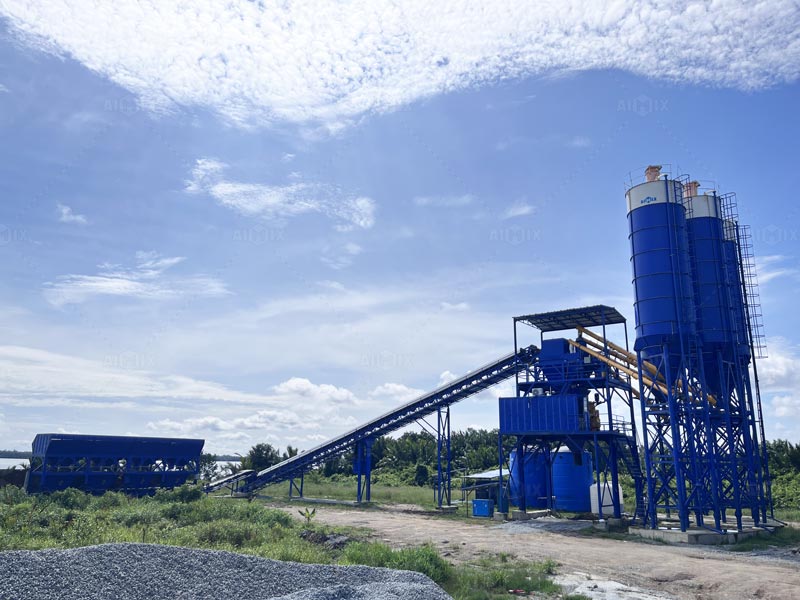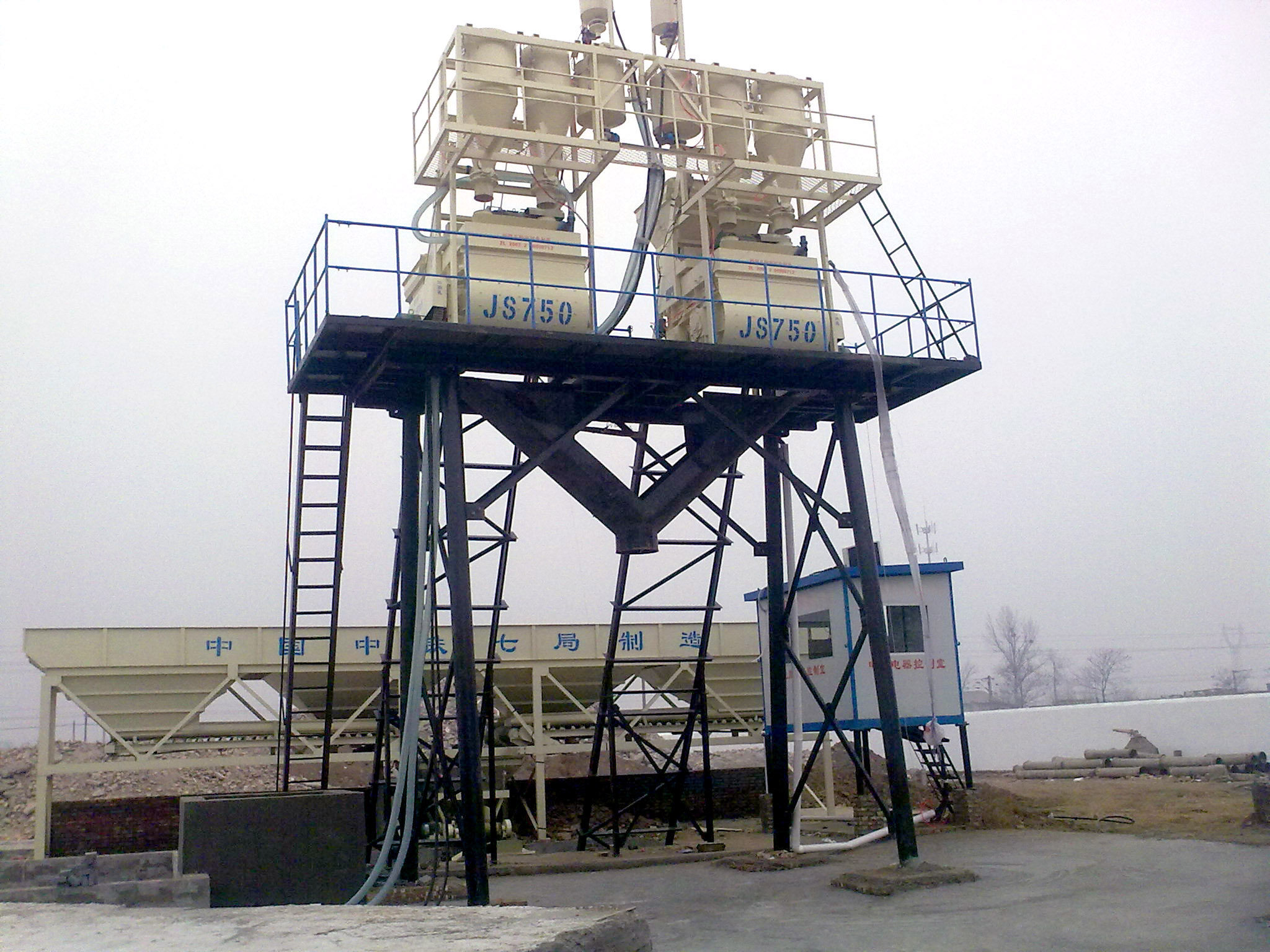Investing in a Portable Concrete Plant
A portable concrete plant is a versatile and efficient solution for producing concrete at various construction sites. Unlike stationary plants, portable models offer mobility and flexibility, making them ideal for diverse projects. However, choosing the right portable concrete plant requires careful consideration of several factors. This article will explore the key aspects you should evaluate to ensure a wise investment.
Contents |
[edit] Why Choose a Portable Concrete Plant?
[edit] 1. Enhanced Flexibility
Portable concrete plants allow contractors to produce concrete on-site, eliminating the need for transportation from a fixed location. This reduces delays and ensures fresh concrete is always available.
[edit] 2. Ideal for Remote Locations
For projects in remote or hard-to-reach areas, portable plants are invaluable. They provide a reliable solution for producing high-quality concrete without relying on external suppliers.
[edit] 3. Cost-Effectiveness
By producing concrete on-site, contractors can save on transportation costs and reduce material wastage, making portable plants a cost-effective choice for construction projects.
[edit] Key Factors to Consider
[edit] 1. Manufacturer Expertise
Why Expertise Matters
Manufacturing a portable concrete plant requires specialised skills. Unlike stationary plants, portable models demand a unique design approach to ensure efficiency and durability.
How to Evaluate Expertise
- Years in the Industry: Choose a manufacturer with extensive experience in producing portable plants. Longevity in the market often reflects customer satisfaction and product reliability.
- Reputation: Look for reviews and testimonials from previous buyers to gauge the manufacturer’s credibility.
[edit] 2. Level of Automation
A fully automated plant minimises labour requirements, reducing operational costs. Automation ensures consistency in concrete production, improving overall efficiency.
Choosing the Right Automation Level
Evaluate your project needs and labour availability to determine whether a fully or semi-automated plant is the better choice for your operations.
[edit] 3. Processing Capacity and Configuration
Assessing Capacity
Select a plant with a processing capacity that aligns with your project demands. Conduct market research to avoid underestimating or overestimating your requirements.
Configuration Options
- Batch Processing: Ideal for projects requiring frequent changes in concrete mix specifications.
- Continuous Processing: Suitable for producing large quantities of concrete with a consistent mix.
[edit] Tips for Buying a Portable Concrete Plant
[edit] 1. Explore International Suppliers
While local suppliers may seem convenient, foreign manufacturers often offer competitive pricing. Many international suppliers provide high-quality portable plants at a fraction of the cost quoted by local vendors.
Key Considerations for Foreign Suppliers
- Ensure they have a local service office for maintenance and spare parts.
- Verify the supplier’s reputation and after-sales support.
[edit] 2. Evaluate Durability and Maintenance Needs
Portable concrete plants operate in challenging environments. Choose a model made from high-quality materials that can withstand wear and tear. Additionally, opt for a plant with low maintenance requirements to minimise downtime.
[edit] 3. Technical Support and Training
A reliable manufacturer should offer technical support and training for your team. This ensures smooth operation and quick troubleshooting when needed.
[edit] Applications in the Construction Industry
[edit] 1. Road Construction
Portable plants are widely used in road construction projects, where mobility and consistent concrete supply are essential.
[edit] 2. Residential and Commercial Projects
These plants are ideal for housing developments and commercial buildings, providing on-demand concrete production.
[edit] 3. Infrastructure Development
From bridges to tunnels, portable concrete plants deliver high-quality concrete directly to the site, ensuring project timelines are met.
[edit] Conclusion
Investing in a portable concrete plant offers numerous advantages, including flexibility, cost savings, and efficiency. However, not all portable plants are created equal. By focusing on manufacturer expertise, automation levels, processing capacity, and supplier reputation, you can ensure a smart investment that meets your construction needs. Whether you’re working on a remote project or require a reliable on-site concrete solution, a well-chosen portable concrete plant will be a valuable asset for your business.
[edit] Related articles on Designing Buildings
- Bituminous mixing and laying plant.
- Cast-in-place concrete.
- Cement.
- Cherry pickers.
- Compressed air plant.
- Concrete.
- Concrete batching plants.
- Concrete boom pumps.
- Construction plant.
- Construction tools.
- Crane supports.
- Earth-moving plant.
- Equipment in buildings.
- Excavating plant.
- Forklift truck.
- Hoist.
- How Do I Make My Job Easier Using The Self-Loading Concrete Mixer.
- How to clean concrete.
- Mini concrete pumps.
- Power float.
- Precast concrete.
- Prestressed concrete.
- Reinforced concrete.
- Scabbler.
- Scaffolding.
- Six remarkable benefits of high pressure water jetting.
- Tool theft.
- Tremie.
- Types of crane.
- Types of roller.
Featured articles and news
Latest Build UK Building Safety Regime explainer published
Key elements in one short, now updated document.
UKGBC launch the UK Climate Resilience Roadmap
First guidance of its kind on direct climate impacts for the built environment and how it can adapt.
CLC Health, Safety and Wellbeing Strategy 2025
Launched by the Minister for Industry to look at fatalities on site, improving mental health and other issues.
One of the most impressive Victorian architects. Book review.
Common Assessment Standard now with building safety
New CAS update now includes mandatory building safety questions.
RTPI leader to become new CIOB Chief Executive Officer
Dr Victoria Hills MRTPI, FICE to take over after Caroline Gumble’s departure.
Social and affordable housing, a long term plan for delivery
The “Delivering a Decade of Renewal for Social and Affordable Housing” strategy sets out future path.
A change to adoptive architecture
Effects of global weather warming on architectural detailing, material choice and human interaction.
The proposed publicly owned and backed subsidiary of Homes England, to facilitate new homes.
How big is the problem and what can we do to mitigate the effects?
Overheating guidance and tools for building designers
A number of cool guides to help with the heat.
The UK's Modern Industrial Strategy: A 10 year plan
Previous consultation criticism, current key elements and general support with some persisting reservations.
Building Safety Regulator reforms
New roles, new staff and a new fast track service pave the way for a single construction regulator.
Architectural Technologist CPDs and Communications
CIAT CPD… and how you can do it!
Cooling centres and cool spaces
Managing extreme heat in cities by directing the public to places for heat stress relief and water sources.
Winter gardens: A brief history and warm variations
Extending the season with glass in different forms and terms.
Restoring Great Yarmouth's Winter Gardens
Transforming one of the least sustainable constructions imaginable.

























